Controls:
Ag1 - Arm Speed brakes (requires gear down)
Ag2-4 - Strobe/Landing/Cabin Lights
Ag5 - Open front left door (Requires not moving)
AG6 - Pushback
AG8 - Engines, Nav/Taxi/Beacon lights
About Sichuan Airlines:
Sichuan Airlines Co., Ltd. (Chinese: ????) is a Chinese airline based in Chengdu Shuangliu International Airport in Chengdu, Sichuan Province, and is the largest airline in western China,[2] operating mainly scheduled domestic and international flights out of Chengdu Shuangliu Airport, Chongqing Jiangbei International Airport and Kunming Changshui International Airport. Sichuan Airlines is also the first airline in mainland China to operate Airbus A320 and the first batch of airlines in mainland China to receive Airbus A350.

Operations
Sichuan Airlines' corporate headquarters is located in its hub Chengdu Shuangliu International Airport in Shuangliu District, Chengdu, Sichuan, and its secondary hubs are at Chongqing Jiangbei International Airport and Kunming Changshui International Airport.
Subsidiary
Sichuan Airlines owns Chengdu Airlines as its subsidiary, which also has its hub at Chengdu Shuangliu International Airport. Chengdu Airlines was formerly named as United Eagle Airlines, and was renamed to Chengdu Airlines to help lift the image of Chengdu on behalf of the city's government, according to an anonymous official of Sichuan Airlines. In late 2009, Sichuan Airlines sold some of its share of Chengdu Airlines to aircraft manufacturer Comac and the Chengdu Communications Investment Group. Chengdu Airlines is the first operator of the Comac ARJ21.
About Airbus A319:
The Airbus A319 is a member of the Airbus A320 family of short- to medium-range, narrow-body, commercial passenger twin-engine jet airliners manufactured by Airbus. The A319 carries 124 to 156 passengers and has a maximum range of 3,700 nmi (6,900 km; 4,300 mi). Final assembly of the aircraft takes place in Hamburg, Germany and Tianjin, China.

The A319 is a shortened-fuselage variant of the Airbus A320 and entered service in April 1996 with Swissair, around two years after the stretched Airbus A321 and eight years after the original A320. The aircraft shares a common type rating with all other Airbus A320 family variants, allowing existing A320 family pilots to fly the aircraft without the need for further training.
In December 2010, Airbus announced a new generation of the A320 family, the A320neo (new engine option). The similarly shortened fuselage A319neo variant offers new, more efficient engines, combined with airframe improvements and the addition of winglets, named "sharklets" by Airbus. The aircraft promises fuel savings of up to 15%. The A319neo sales are much lower than other A320neo variants, with around 1% of orders by June 2020.
As of August 2023, a total of 1,499 Airbus A319 aircraft have been delivered, of which 1,351 are in service. In addition, another 48 airliners are on firm order (comprising 2 A319ceo and 46 A319neo). American Airlines is the largest operator with 133 A319ceo in its fleet.
Sichuan Aidlines Flight 8633:
Sichuan Airlines Flight 8633 was a flight from Chongqing Jiangbei International Airport to Lhasa Gonggar Airport on 14 May 2018, which was forced to make an emergency landing at Chengdu Shuangliu International Airport after the cockpit windshield failed. The aircraft involved was an Airbus A319-100. The incident was adapted into the 2019 film The Captain and was also featured in the documentary series Mayday.

Aircraft and crew:
Sichuan Airlines Flight 8633 was being operated by an Airbus A319-133, serial number 4660, registration B-6419. It first flew on 11 July 2011 following roll-out from Airbus Tianjin final assembly line, and was delivered to Sichuan Airlines on the 26th of the same month. It was powered by two IAE V2524-A5 engines. As of 14 May 2018, the aircraft had recorded more than 19,900 flight hours and 12,920 cycles before the incident. In addition to the 3 pilots, the jetliner also carried 6 cabin crew and 119 passengers.
The pilots were: pilot-in-command Liu Chuanjian (Chinese: ???) (45), who had logged 11,400 flight hours including 9,200 on A319. second-in-command Liang Peng (Chinese: ??), who had logged 8,700 flight hours including 6,700 on A319. and First Officer Xu Ruichen (Chinese: ???) (27). Who had logged 2,800 flight hours including 1,100 on A319. Before Liu joined Sichuan Airlines in 2006, he worked as a flight instructor for ten years in Sichuan's Second Aviation College of People's Liberation Army Air Force.
Incident:
On 14 May 2018, Flight 8633 took off from Chongqing Jiangbei International Airport at 6:25 CST (22:25 UTC). Approximately 40 minutes after departure while over Xiaojin County, Sichuan at the altitude of 9 km (30,000 ft; 9,000 m), the right front segment of the windshield separated from the aircraft followed by an uncontrolled decompression. As a result of the sudden decompression, the flight control unit was damaged, and the loud external noise made spoken communications impossible. The co-pilot however, was able to use the transponder to squawk 7700, alerting Chengdu Shuangliu International Airport control about their situation. Because the flight was within a mountainous region, the pilots were unable to descend to the required 8,000 ft (2,400 m) to compensate for the loss of cabin pressure.
About 35 minutes later, the jetliner made an emergency landing at 7:42 CST (23:42 UTC) at Chengdu Shuangliu International Airport. The aircraft was overweight on landing. As a result, the plane took a longer distance to come to a stop and the tires burst.
Despite wearing a seatbelt, first officer Xu was partially sucked out of the aircraft. He suffered facial abrasions, a minor right eye injury and a sprained wrist. One of the flight attendants on the aircraft, Zhou Yanwen (Chinese: ???), also suffered a wrist injury and received treatment. Owing to the insulation design of the Airbus A319, the temperature did not drop immediately for the passengers, despite the cockpit's exposure to the outside environment, saving them from frostbite. Even though the plane was unable to descend at the time of the incident due to the surrounding terrain, the flight crew remained conscious and did not experience hypoxia or frostbite. No other crew member or passenger was injured.
Investigations:
The incident was investigated by the Civil Aviation Administration of China, Airbus and Sichuan Airlines. In accordance with the Chicago Convention on International Civil Aviation's Annex 13 regulation, Airbus refrains from any further comments on their progress. On 2 June 2020, the final report was released. The root cause of the incident was damage to the seal on the right-hand side windshield, which caused moisture to penetrate and remain in the cavity on the bottom edge of the windshield. The insulation of wires in the windshield heating system was reduced after being soaked for a long time, resulting in continuous arc discharges at the bottom left corner of the windshield. This led to local high temperatures and breakage of the windshield's double-layer structure. As a result, the windshield could no longer withstand the pressure difference between inside and outside the cockpit and burst off from the fuselage
Aftermath:
The crew of Sichuan Airlines Flight 8633 were hailed as heroes by the public media and the captain, Liu Chuanjian was given a prize of 5 million yuan (£569,400).
The crew and pilots continue to work for Sichuan Airlines and the airline continues to keep flight 3U8633 in operation, flying the same route. The aircraft B-6419 was repaired and returned to service with Sichuan Airlines on 18 January 2019.
Specifications
Spotlights
- 929 2.2 years ago
- AeroflotBilibili one year ago
General Characteristics
- Predecessor A319 IAE
- Successors 1 airplane(s) +7 bonus
- Created On Android
- Wingspan 111.7ft (34.1m)
- Length 116.6ft (35.5m)
- Height 54.5ft (16.6m)
- Empty Weight N/A
- Loaded Weight 49,195lbs (22,314kg)
Performance
- Power/Weight Ratio 0.993
- Horse Power/Weight Ratio 0.06
- Wing Loading 31.4lbs/ft2 (153.2kg/m2)
- Wing Area 1,567.5ft2 (145.6m2)
- Drag Points 7870
Parts
- Number of Parts 449
- Control Surfaces 11
- Performance Cost 2,674

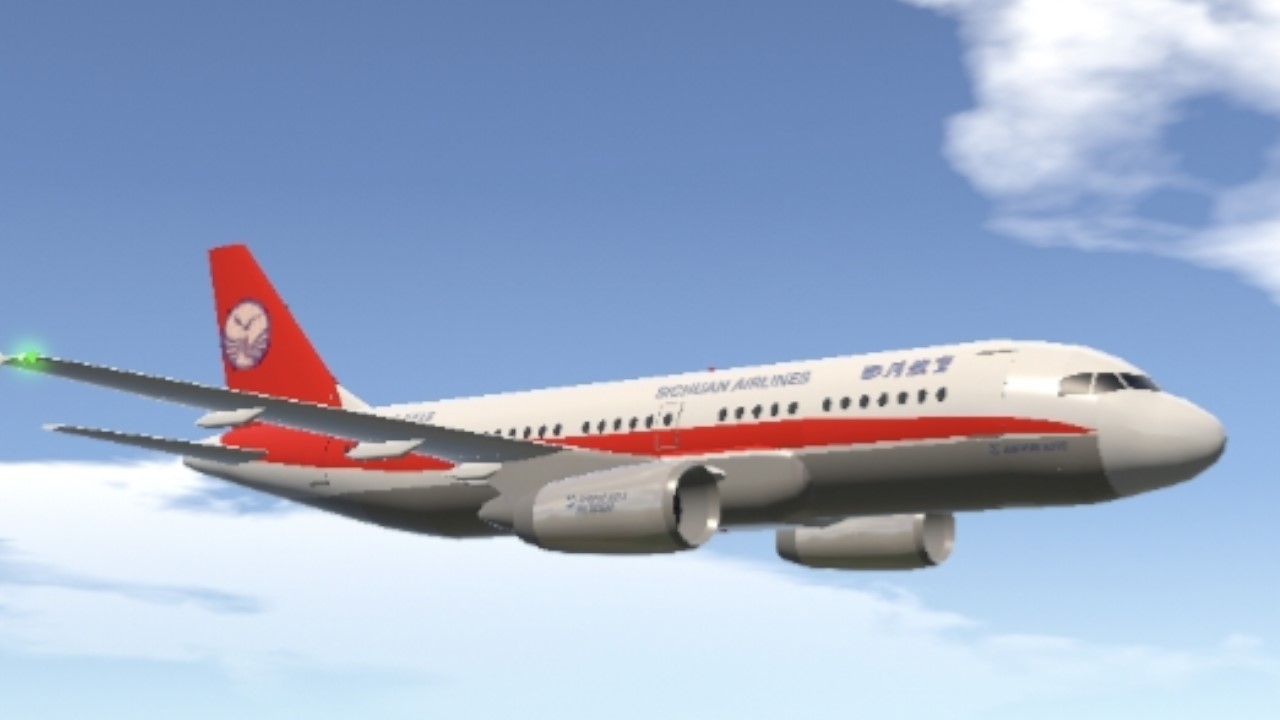
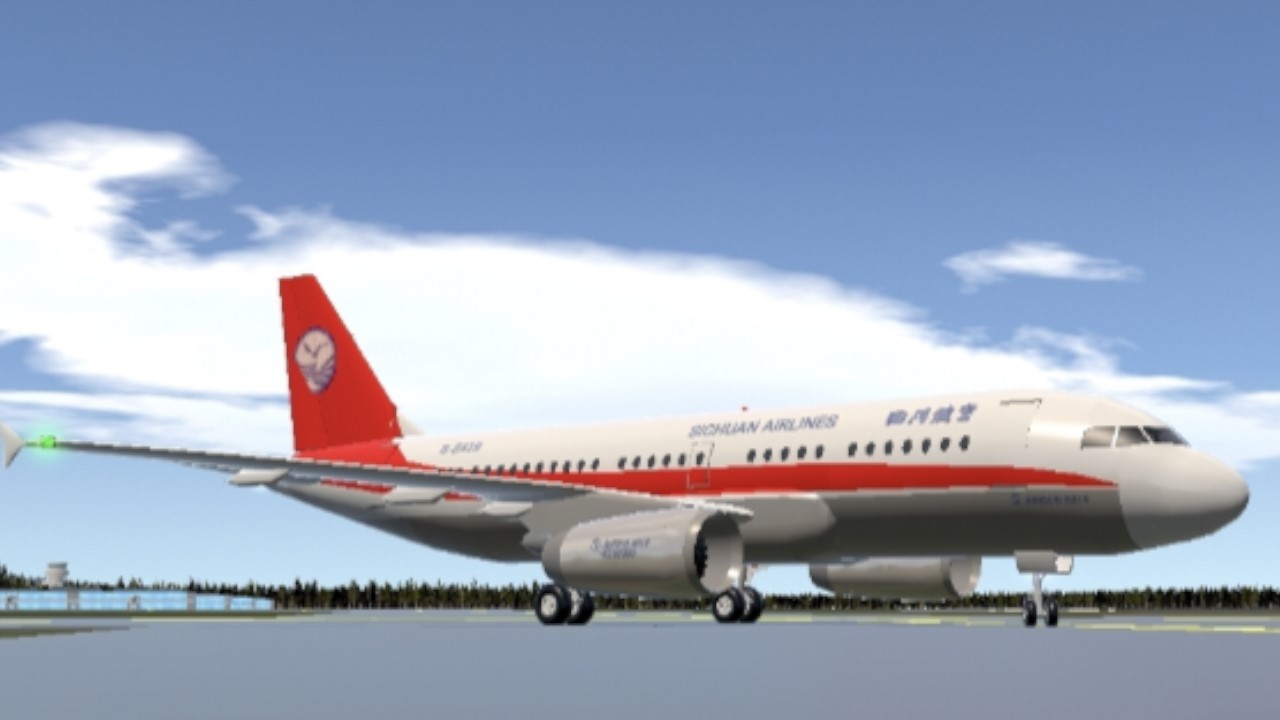
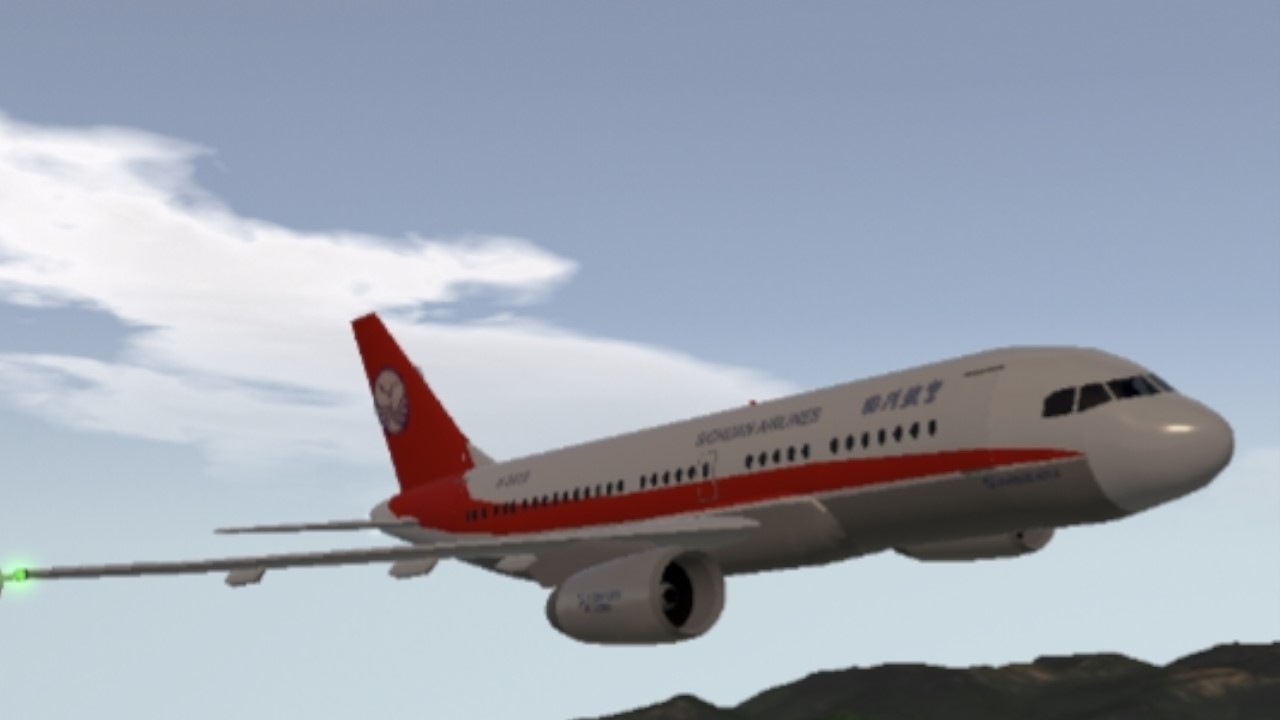
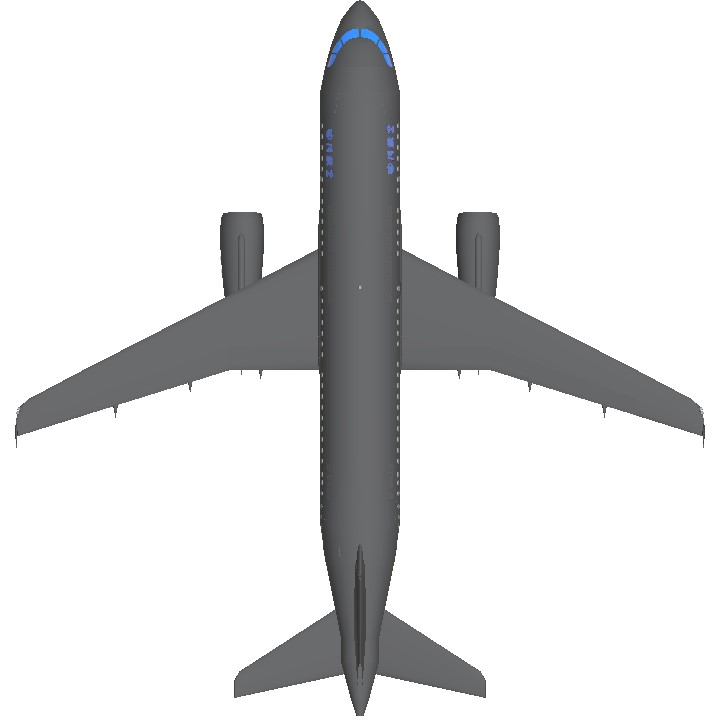
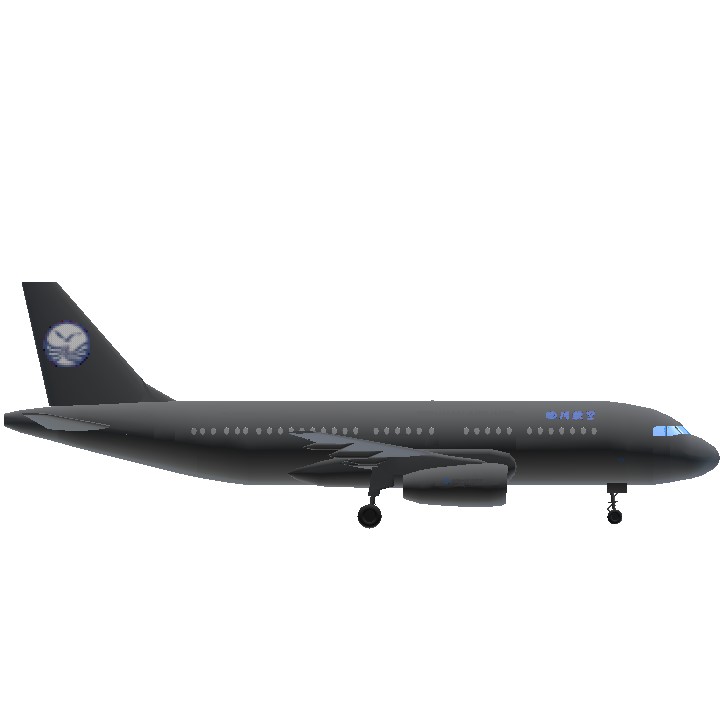
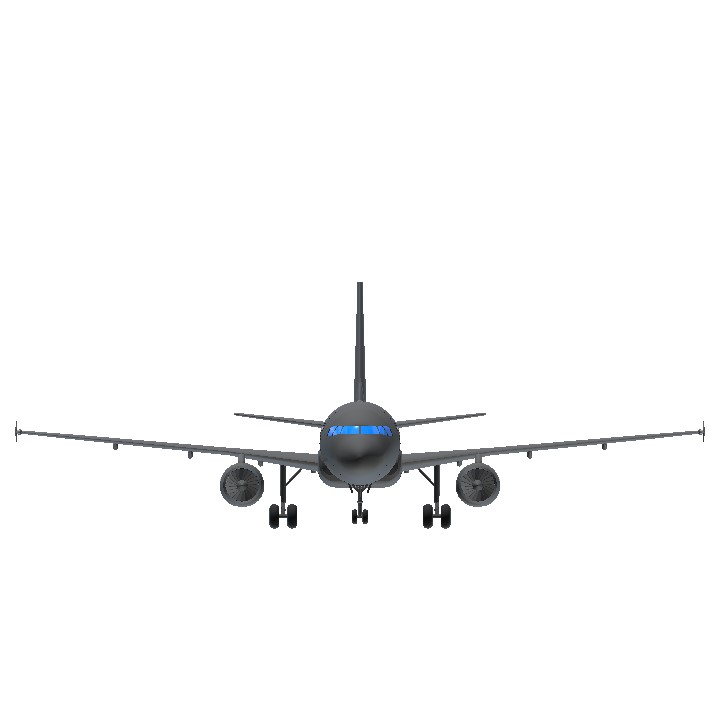
@AeroflotBiliBili
@Yusufpilot2 我是中国人
@Yusufpilot2 because he is from China
@555588539 why are u speaking Chinese?
@AeroflotBilibili 说错了,那个底还有其他细节我都不会做😭😭😭
@AeroflotBilibili 可以教我做涂装吗?我做的那个大西洋670,我不会做那个点,还有很多细节我都不会做呀
@555588539 这涂装是我建议他做的,所以你发消息我也能收到(doge)
@AeroflotBilibili 就这么接上话了?
@555588539 成都叫你
四川8633
great scale build !
不完全,之前有复兴@CR929thenewSPplayer
nice !
niceeeee
The pilot:
Finally an airline livery form china